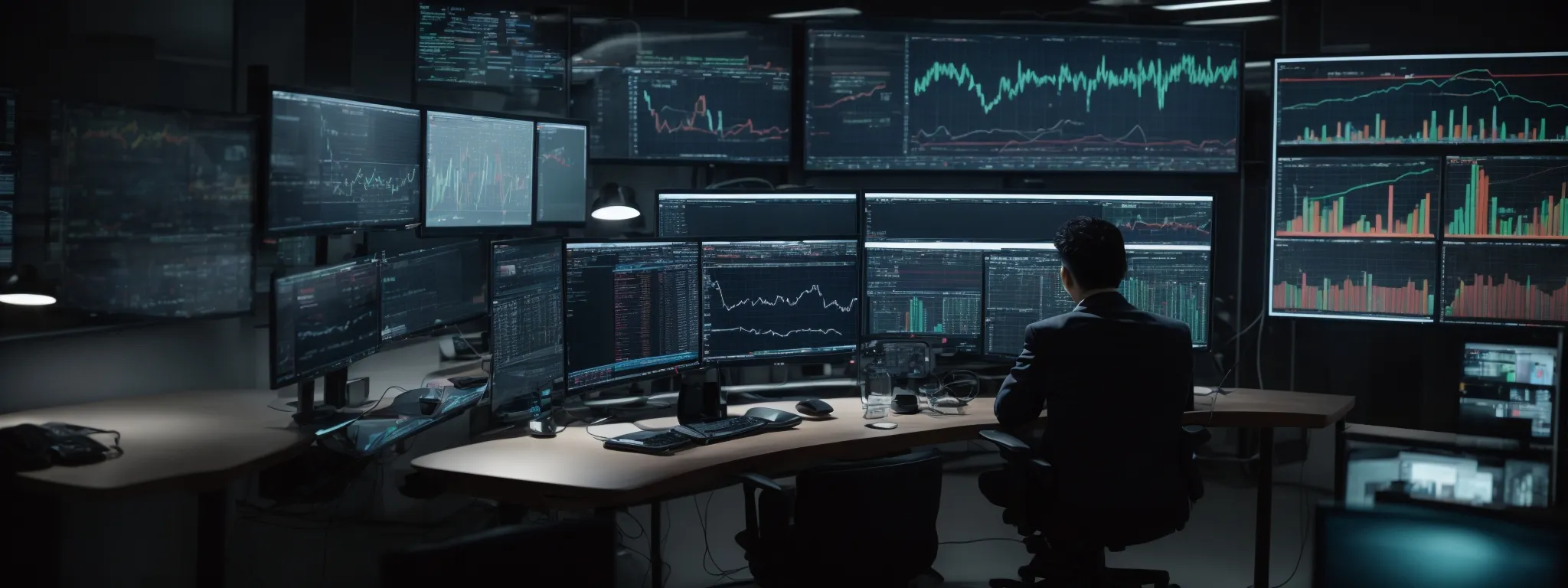Digital Asset Management and SEO: Organizing for Success
Digital Asset Management and SEO: Organizing for Success In an era where every byte speaks volumes, mastering digital asset management (DAM) has become essential for maximizing search […]
Digital Asset Management and SEO: Organizing for Success
In an era where every byte speaks volumes, mastering digital asset management (DAM) has become essential for maximizing search engine optimization (SEO).
With every image file, video file, and document, businesses accumulate a wealth of digital assets that, if managed wisely, can propel their SEO ranking and ensure their brand stands out amidst the clamorous digital marketplace.
By streamlining SEO efforts through meticulous asset organization and optimization, companies can improve their website’s user experience and, consequently, its position in search results.
Effective DAM practices not only safeguard a company’s media files but also refine their visibility to search engines and prospective customers.
Keep reading to discover how integrating digital asset management into your SEO strategy can transform your online presence and drive success.
Key Takeaways
- LinkGraph Integrates Advanced SEO Techniques Within Digital Asset Management to Enhance Visibility and Engagement
- Optimizing Digital Assets for Search Engines Is Essential for Meeting User Intent and Improving a Brand’s Reach
- Centralization and Organization of Digital Assets Through DAM Systems Boosts Search Engine Crawler Efficiency and Accessibility
- LinkGraph’s DAM Solutions Incorporate Automation and Advanced SEO Tools to Streamline Optimization and Boost Search Rankings
- Monitoring and Refining Digital Asset Performance Is Critical for Sustaining Organic Growth and Ensuring SEO Success
Enhancing SEO With Effective Digital Asset Management

In today’s digital marketplace, a comprehensive Search Engine Optimization (SEO) strategy anchors itself not merely on textual content but extends its prowess into the realm of organized digital asset management (DAM).
Strategic handling of digital files through DAM paves the way for businesses to refine their content workflow, fueling SEO with methodical practices.
LinkGraph’s advanced SEO services spotlight the significance of metadata management, ensuring images, videos, and other media files enhance visibility and user engagement.
By embedding SEO-friendly file names and leveraging robust DAM systems, a company can seamlessly manage image SEO and employ tags to categorize content effectively.
Furthermore, the optimization of video files for search engines becomes integral to satisfying user intent and broadening a brand’s reach.
These DAM practices underpin the robust SEO strategies that guide enterprises in conquering search engine results pages (SERPs), advancing both the page rank and the user experience.
Streamlining Content Workflow for SEO
LinkGraph harnesses the power of digital asset management to ensure that SEO campaigns are not just about keywords, but about the complete architecture of content delivery. This includes the optimization of product images and video files to accelerate page load speeds, meeting the need for fast, efficient access to information.
A cogent content workflow is a cornerstone in the bridge between asset management and search engine visibility. Leveraging tools like LinkGraph’s Search Atlas ensures that every digital file, whether it be an image or document, is indexed correctly and contributes positively to the overall SEO strategy:
| SEO Factor | LinkGraph’s DAM Approach | Outcomes |
|---|---|---|
| Metadata Management | Embedding SEO-friendly file names and tags | Improved Search Results Visibility |
| Page Load Speeds | Optimizing image and video file sizes | Enhanced User Experience and Retention |
| Content Delivery | Utilizing a robust CDN in content strategy | Faster Access and Distribution of Brand Assets |
Leveraging File Metadata for Enhanced Visibility
LinkGraph’s meticulous approach to metadata management manifests in its adeptness to enhance digital asset visibility across search results. With a keen eye for detail, the provider ensures that every image file, video file, and creative is graced with SEO-rich file names and descriptive tags that speak directly to the search engine algorithms, thereby catapulting clients’ digital content to the forefront of user searches.
It is through such strategic metadata optimization that assets transcend their mere existence as digital files and metamorphose into tools that amplify brand presence online. LinkGraph’s seamless integration of advanced SEO techniques within their DAM services facilitates the intricate dance between asset visibility and search engine preferences, ensuring clients’ digital portfolios are optimized for maximum searchability and user reach.
Using Digital Assets to Improve User Engagement
Engagement climbs when users encounter media-rich and interactive web pages, an endeavor where digital asset optimization plays a crucial role. LinkGraph’s expertise lies in elevating the SEO value of digital assets to ensure that product photos, video files, and audio clips not only capture attention but also encourage active participation from the target audience.
LinkGraph skillfully intertwines digital asset management with user experience, resulting in a digital landscape where social media posts and website content are not mere placeholders but instrumental in forging deeper connections with consumers. The company’s focus on optimizing every digital asset ensures that visitors are not just passive viewers but engaged participants in the brand’s digital narrative.
Managing Image SEO Through DAM Systems
DAM systems serve as an essential cog in the SEO machinery, offering a strategic edge in managing and optimizing a vast array of image assets for search engines. By prioritizing image SEO through DAM platforms, LinkGraph ensures that every product photo and brand image is meticulously indexed and appears precisely where customers are most likely to engage with them.
Effectively employing a DAM solution not only simplifies the organization of digital files but also sharpens the focus on image-related SEO factors such as file size, name, and format. This focus aligns LinkGraph’s client offerings with the evolving algorithms of search engines:
- Ensuring that every image file is optimized for page speed without compromising quality.
- Providing cohesive tagging and version control to maintain brand consistency across platforms.
- Strategically leveraging metadata with SEO-centric keywords and descriptions to bolster SERP positioning.
In this fast-paced digital era, a DAM system becomes an indispensable tool in LinkGraph’s arsenal, driving SEO efficiency and ultimately enhancing the visibility of website pages in a crowded online ecosystem.
The Role of Tags and Categories in SEO
In the competitive terrain of SEO, tags and categories emerge as silent yet potent forces that brandish influence over how content is discovered and categorized by search engines. LinkGraph’s expertise in SEO optimization leverages these elements to structure digital assets in a manner that aligns with search algorithms, propelling a client’s digital content to higher visibility within SERPs.
With precision, LinkGraph navigates the nuanced field of metadata, applying relevant tags and categories to digital assets, ensuring that search engines can effortlessly discern the context and relevance of content. This strategic categorization effectively maps out a clear pathway for target audiences, bolstering the connection between user queries and the client’s organized library of digital assets.
Optimizing Video Content for Search Engines
LinkGraph recognizes the burgeoning importance of video content in search engine marketing, honing in on strategies that elevate such content within search engine results. Their approach to SEO extends to ensure that video files are not only enriched with relevant keywords but also structured with appropriate schema markup to signal their value to search algorithms.
By focusing on asset optimization, the provider ensures that video content is served to users with optimal load speeds, maintaining a balance between high-quality media and the technical demands of SEO ranking. This attention to technical detail results in video assets that captivate audiences and serve as pivotal touchpoints in a comprehensive digital marketing strategy.
How DAM Fuels Your SEO Strategy

The synergy between Digital Asset Management (DAM) systems and Search Engine Optimization (SEO) practices represents a crucial, often untapped avenue for enhancing online presence and driving traffic.
At the confluence of organization and optimization, LinkGraph’s services exemplify how centralizing digital assets can streamline SEO management, creating scalable content ecosystems adept at evolving with both technological advancements and business growth.
By embedding automation in DAM platforms and integrating sophisticated SEO tools, businesses can orchestrate a choreography of digital content that not only engages audiences but also harvests valuable insights from asset performance metrics.
This domain, where optimized digital asset libraries become traffic conduits, underscores the transformative power of astutely managed DAM systems in fortifying an SEO strategy.
Centralizing Digital Assets for Better SEO Management
In the realm of SEO, centralizing digital assets streamlines management and sharpens strategic focus. LinkGraph masterfully leverages DAM solutions to gather a company’s scattered brand assets into a consolidated repository, priming them for optimal indexation and display in search results.
The consolidation of digital assets under one umbrella enhances search engine crawler efficiency and reinforces the accessibility of a brand’s most valuable resources. LinkGraph spotlights the importance of a centralized DAM system: it is not only an organizational bedrock but also a catalyst for amplified SEO performance and audience reach:
| Centralized DAM Benefit | SEO Impact |
|---|---|
| Streamlined Content Management | Boosted Search Engine Relevance |
| Unified Asset Repository | Enhanced Crawler Accessibility |
| Efficient Metadata Deployment | Improved SERP Presence |
Embracing centralization equips businesses with the ability to nimbly modify and update digital content, aligning it with current search engine algorithms and customer needs. LinkGraph’s adept use of DAM as an SEO enhancement tool ensures that assets are not only stored but also serve as a strategic component in elevating a brand’s digital footprint.
Scalability and SEO: Growing With DAM
As businesses scale, their digital presence typically expands in tandem, making the augmentation of SEO strategy with a robust DAM system imperative. LinkGraph expertly assists in the evolution of companies, ensuring their SEO and asset management approaches are equipped to handle an increasing volume of digital files, traffic, and consumer touchpoints.
LinkGraph’s strategic implementation of DAM fosters an environment where scalability does not compromise SEO efficacy. Their services support the unfolding complexities of growing digital libraries, judiciously aligning with SEO techniques that maintain and elevate the client’s search engine standing, regardless of the expanding digital terrain.
Automating SEO Tasks Within a DAM Platform
Within the digital asset management landscape, automation emerges as a lynchpin for enhancing SEO efficiency. LinkGraph’s DAM platform incorporates automated processes which streamline SEO tasks like metadata updates, asset categorization, and optimization efforts, thus allowing businesses to focus on strategic initiatives while seamless backend operations support their SEO objectives.
LinkGraph’s DAM solution enables real-time SEO enhancements, wherein digital assets are automatically adjusted in response to evolving search engine algorithms. This automation ensures that a company’s digital content remains competitive in SERPs, effectively reducing the manual workload and positioning clients for continuous online visibility improvement.
Integrating DAM With SEO Tools for Synergy
Integrating digital asset management with specialized SEO tools forges a powerful alliance, enhancing the performance and discoverability of digital assets within search engines. LinkGraph pioneers this blend by equipping DAM platforms with Search Atlas, a tool that optimizes assets for better indexation and stronger search engine ranking, ensuring each digital file adds cumulative value to the client’s SEO endeavors.
This strategic integration orchestrated by LinkGraph streamlines the optimization process, enabling a seamless transfer of data between DAM systems and SEO analytics. It equips marketing teams with insights that drive decision-making and content optimization, tailoring digital assets to match user search behavior and the competitive landscape of the web.
Driving Traffic With Optimized Digital Asset Libraries
Successful digital asset libraries are not static repositories but dynamic engines powering SEO. LinkGraph takes this philosophy to heart, meticulously optimizing digital asset libraries to ensure that they serve as conduits for increased web traffic. With each digital asset thoughtfully curated and optimized, these libraries become powerful tools that capture and direct the flow of visitors to a brand’s website, enhancing the overall volume of organic traffic.
LinkGraph’s deep understanding of SEO nuances transforms orderly digital asset libraries into strategic traffic drivers. By implementing a streamlined DAM system that incorporates SEO best practices, the company ensures that every product image, every media file, and every piece of marketing material contributes toward a singular goal: propelling a brand’s website to the top of search results, thus boosting the inflow of user traffic.
Monitoring Asset Performance for SEO Insights
LinkGraph’s dedication to asset performance monitoring gives clients a competitive edge in assessing the SEO impact of each digital file. By meticulously tracking user engagement and conversion rates associated with digital assets, this approach highlights areas for optimization, directly informing future SEO initiatives and ensuring that every asset contributes to a cohesive online marketing strategy.
Understanding the intrinsic relationship between asset engagement and search engine ranking positions is paramount. LinkGraph employs advanced SEO tools to monitor and interpret the performance data of digital assets. This capability enables businesses to fine-tune their content and deploy assets that resonate with their target audience, thus amplifying SEO results and driving sustained organic growth.
Organizing Digital Content for Maximum SEO Impact

Within the intricate web of digital marketing, the methodical organization of digital content stands as a pillar of SEO mastery.
Far beyond mere aesthetics, structured asset hierarchy, precise access levels, consistent SEO application, and search engine friendly naming conventions form the backbone of a robust digital asset management strategy.
LinkGraph champions these foundational aspects, optimizing the intricate relationship between digital assets and search visibility.
With excellence in organization, LinkGraph not only enhances the discoverability of assets but elevates a brand’s presence to the pinnacle of search engine results, leaving an indelible mark on both user experience and search algorithms.
Creating a Search-Friendly Digital Asset Hierarchy
A meticulously crafted digital asset hierarchy is crucial for bolstering a website’s SEO framework. LinkGraph excels in constructing a logical and intuitive structure for a company’s digital content, ensuring search engines can navigate and index assets with ease, thereby amplifying their discoverability.
Under LinkGraph’s guidance, the creation of a search-friendly digital asset hierarchy becomes a strategic endeavor. The firm ensures each asset is nested accurately within the virtual architecture, providing clarity for search algorithms and enhancing the cohesive presentation of a brand’s online domain.
Customizing Access and Control for Efficient SEO Operations
LinkGraph recognizes that in the dynamic sphere of SEO, customizing access and control is critical for orchestrating efficient operations. By implementing selective permissions within their DAM systems, LinkGraph empowers businesses to maintain a secure yet agile control structure, thereby ensuring that SEO tactics are executed with precision and without compromising collaborative workflows.
This tailored approach to access management facilitates swift adaptation to the rapidly changing landscape of search engine algorithms, highlighting LinkGraph’s commitment to providing a DAM solution that underpins robust and responsive SEO strategies. The firm’s utilization of flexible access protocols means clients can respond to SEO opportunities with the speed and efficacy required in today’s competitive digital marketplace.
Ensuring Consistent SEO Practices Across Digital Assets
LinkGraph’s strategic approach towards digital asset management hinges on instilling uniform SEO practices across all digital assets. This standardization ensures that product photos, marketing materials, and brand assets uniformly contribute to the SEO strategy, paving the way for consistency in message and maximizing online visibility.
| Digital Asset Management Focus | SEO Practice | Impact on SEO |
|---|---|---|
| Product Images | Consistent Filename and Alt-Text Optimization | Higher Image Search Ranking |
| Marketing Materials | Unified Tagging and Metadata Standards | Improved Content Findability |
| Brand Assets | Regular Updates to Reflect SEO Trends | Increased Relevance in SERPs |
Maintaining a uniform application of SEO techniques across various asset types not only reinforces the cohesiveness of the content but also enhances the site’s comprehensiveness to search engine crawlers. LinkGraph meticulously orchestrates this process, empowering clients to secure improved search rankings and entice a broader audience.
Building a Search Engine Friendly Naming Convention
A treasure trove of SEO potential resides in the nuances of a search engine friendly naming convention for digital assets. LinkGraph’s expertise in this domain is evident as it crafts intuitive and keyword-rich filenames, a strategy which not only aligns with user search patterns but also assures a more streamlined indexing process by the search engines, strengthening the overall SEO footprint of a brand’s digital content.
The architecture of this approach by LinkGraph renders an effortless retrieval process for users and search algorithms alike, reinforcing the accessibility and relevance of a company’s digital presence. Mastery in this facet of SEO—a reflection of LinkGraph’s meticulous attention to the details of digital asset management—cements the relevance of a client’s assets in search results, driving meaningful traffic to their web pages.
The Impact of Folder Structures on SEO
LinkGraph elevates the art of folder structure optimization, recognizing its capacity to impact SEO significantly. By establishing clear and descriptive paths within the digital architecture, the provider equips search engines with the ability to logically assess and index a website’s content, which is crucial for achieving a prominent stance in search rankings.
A well-devised folder structure is not only about order; it serves as a guide for search algorithms to prioritize and understand the hierarchy of content, thereby enhancing the likelihood of higher placement in search results. LinkGraph’s strategic approach ensures that each digital asset is nestled within a contextually appropriate folder, bolstering a website’s visibility and searchability.
SEO Best Practices for Managing Multimedia in DAM

In an era where content is king, Digital Asset Management (DAM) serves as the queen orchestrating order within the domain of multimedia assets.
This subsection delves into the application of SEO best practices to the management of multimedia within DAM, illuminating pathways for enhancing asset visibility across the digital expanse.
Probing into the nuanced layers of audio and video SEO, assessing the twin pillars of quality and relevance for image optimization, exploring the strategic cross-referencing of assets, and employing performance tracking for ongoing SEO refinement, this passage marks the compass for navigating the complex terrain where digital media intersects with the imperatives of search engine hegemony.
Enhancing the Discoverability of Multimedia Assets
In the digital expanse where content reigns, the discoverability of multimedia assets is imperative for an effective SEO strategy. LinkGraph’s SEO services underscore the importance of utilizing DAM platforms to enhance the visibility of multimedia content, ensuring that these assets are indexed appropriately and surface in relevant search queries.
To achieve this, the company focuses on optimizing key SEO elements specific to multimedia files, such as alt tags, captions, and structured data, which are instrumental in communicating content relevancy to search engines:
- Employing comprehensive alt text and captions that incorporate target keywords for image files.
- Enriching video content with structured data to increase its chances of being featured in rich snippets and video search results.
- Ensuring audio files are accompanied by accurate transcripts and metadata to aid in search engine indexing and discovery.
Through these practices, LinkGraph helps transform multimedia assets into valuable SEO contributors, increasing a brand’s digital presence and engaging the target audience more effectively.
Applying SEO Techniques to Audio and Video Files
LinkGraph’s expert approach to SEO transcends conventional methodologies by enhancing the searchability of audio and video files through advanced techniques that resonate with modern search engines. The company’s strategists optimize these files with precision, applying relevant keywords and ensuring accurate metadata which aid in effective content categorization and increased visibility.
The professional crafting of descriptive, SEO-aligned titles and engaging content summaries for multimedia elements forms the cornerstone of LinkGraph’s SEO services. This meticulous attention to detail in audio and video SEO empowers businesses to connect with a broader audience, as optimized multimedia content now plays a pivotal role in their search engine rankings and overall digital strategy.
The Importance of Quality and Relevance in Image SEO
LinkGraph pragmatically underscores the critical nature of quality and relevance in image SEO, positioning this twofold focus as a fulcrum for enhancing a brand’s search engine visibility. High-quality images that are crisply displayed and properly compressed without losing clarity ensure swift loading times and a seamless user experience, factors that are rewarded by search algorithms.
Meanwhile, relevance sits at the heart of LinkGraph’s approach to image optimization, emphasizing the alignment of visual content with pertinent user queries. Accurate, information-rich images that are directly tied to the surrounding text contents elevate a brand’s relevance in SERPs, bridging the gap between user intent and the information provided.
Cross-Referencing Assets for Ample SEO Opportunities
LinkGraph’s strategic approach to asset cross-referencing entails crafting a network of interconnected digital assets, thereby opening multiple pathways for a search engine to gauge the depth and breadth of a website’s content. The judicious interlinking of related images, videos, and audio files not only enriches the user experience but also signifies to search engines the comprehensive nature of a brand’s digital presence.
This technique casts a wider net in the SEO landscape, allowing for an increase in a brand’s visibility across various types of search results. By proactively linking complementary assets, LinkGraph ensures that each element not only stands alone but also contributes to the collective SEO value of the content ecosystem, fostering a multi-dimensional outreach that captivates users and search algorithms alike.
Tracking Multimedia Performance for SEO Refinement
Tracking multimedia performance for SEO refinement is imperative for pinpointing how multimedia content contributes to search visibility and user engagement. LinkGraph’s approach to performance analysis entails close scrutiny of multimedia asset interactions to uncover insights on how they can be better leveraged within the SEO ecosystem.
Such performance tracking enables LinkGraph’s experts to adjust and enhance SEO tactics for multimedia content, thus ensuring digital assets remain powerful conduits for organic search traffic. Through data-driven strategies, the company optimizes the clients’ multimedia assets, resulting in a tangible uplift in search rankings and audience reach.
- Gauging user interaction with multimedia content to highlight areas for SEO enhancement.
- Modifying and refining asset metadata based on performance analytics for optimized search results visibility.
- Implementing targeted changes that drive the synergy between multimedia content and overall SEO objectives.
Optimizing File Formats and Sizes for Improved SEO

The intersection of SEO and asset management is accentuated when exploring file formats and sizes.
For a website to hold its ground in the competitive SEO landscape, it is not enough to simply possess high-quality digital assets; these assets must also be optimized for the web.
Achieving this delicate balance between maintaining visual fidelity and ensuring optimal load speeds is crucial for search engine rankings.
In this context, LinkGraph extends its expertise, selecting file formats that harmonize with search engines, adopting advanced compression techniques within DAM systems to boost SEO, and implementing adaptive sizing strategies for various platforms and devices, all of which are vital in sculpting an SEO-friendly digital footprint.
Balancing Quality and Load Times for SEO
LinkGraph adeptly navigates the crucial balance between the visual quality of digital assets and their corresponding load times, understanding that both elements are pivotal to a sound SEO strategy. Employing sophisticated image compression techniques within their digital asset management protocols, LinkGraph enhances the speed at which high-resolution images and graphics load, thereby contributing positively to search engine algorithms that factor in page speed.
Consistently optimizing for device compatibility and varying internet conditions, LinkGraph delivers an outstanding user experience without sacrificing the integrity of digital files. The company’s strategic approach ensures each digital asset is suitably formatted, maintaining aesthetic excellence while bolstering website load speed, which is essential for achieving and sustaining higher search engine rankings.
Selecting the Right File Formats for Search Engines
Grasping the nuances of file formats is pivotal for search engine compatibility, and LinkGraph excels in this strategic selection process. The company delineates the critical differences between formats such as JPEG, PNG, and WebP, employing the one that caters to both quality and search engine favorability to enhance a brand’s digital presence.
In this realm of optimization, LinkGraph aligns client assets with the most appropriate file formats, an action that significantly contributes to SEO success. Their expertise ensures that images are displayed crisply across various devices and browsers, while reducing file sizes for improved page load speeds, essential for higher search rankings.
Utilizing Compression Tools Within DAM for SEO
LinkGraph leverages the latest compression technology in its digital asset management system, streamlining the SEO process by significantly reducing the file size of images and videos without diminishing their quality. This careful fine-tuning helps websites to achieve quicker load times, a factor highly regarded by search engines when determining page rankings.
Recognizing the delicate balance between image quality and performance, LinkGraph incorporates advanced DAM compression tools that precisely optimize digital assets for the web. Such strategic use of compression directly contributes to improved SEO outcomes by elevating page load speeds, enhancing user experience, and satisfying the speed metrics of search engine algorithms.
Adaptive Sizing for Different Platforms and Devices
LinkGraph’s approach to digital asset management facilitates adaptive sizing, which ensures that digital files are perfectly tailored for an array of platforms and devices. By crafting responsive design parameters within DAM systems, the company guarantees that assets maintain their functional and aesthetic integrity on desktops, tablets, and smartphones alike.
In this era of diverse screen sizes and resolutions, LinkGraph navigates the complexities of device-specific rendering. Their expertise enables optimized display and functionality of images and videos, ensuring consistent user experience and improved SEO outcomes across all digital touchpoints.
| Device | Optimization Focus | SEO Benefit |
|---|---|---|
| Desktops | High-Resolution Images | Enhanced Clarity and Detail |
| Tablets | Touchscreen Accessibility | Improved User Engagement |
| Smartphones | Mobile-Optimized Media | Faster Page Load Speeds |
Securing Digital Assets While Maintaining SEO

Safeguarding a company’s digital assets is paramount in today’s online environment, where the constant threat of unauthorized use looms.
Yet, for organizations invested in enhancing their SEO footprint, security protocols must be carefully crafted not to impede search engine access or undermine SEO efforts.
Implementing robust security measures that dovetail with SEO initiatives, managing permissions to ensure assets remain discoverable, leveraging watermarks, and licensing to deter misuse, and adeptly handling potential duplication and cannibalization through DAM stands as pivotal concerns.
Each tactic strikes a balance between protecting a brand’s valuable digital assets and fostering their visibility and searchability on the vast digital stage.
Implementing Security Measures That Support SEO Efforts
In the intricate dance of digital promotion, LinkGraph exhibits prowess in erecting security measures which fortify the integrity of digital assets while simultaneously propelling SEO ventures forward. Their approach encapsulates the creation of digital fortresses that permit search engines to crawl and index content, nurturing a brand’s visibility without leaving it vulnerable to digital predations.
LinkGraph astutely integrates advanced encryption strategies into their DAM systems, ensuring that while assets remain shielded from illicit usage, they also retain their SEO clout. The unyielding vigilance harmonized with SEO insights protects a company’s valuable digital content, bolstering their online presence with a steadfast yet search-optimized defense.
Managing Permissions Without Hindering Search Engine Access
LinkGraph exemplifies proficiency in configuring permissions that deliver robust security for digital assets without stifling their SEO potential. Their expertise ensures essential digital content remains accessible to search engine crawlers, thereby maintaining the assets’ contribution to search engine prominence.
The company designs permission schemas with the dual objective of protecting sensitive digital assets while fostering seamless indexation. By granting search engines the appropriate levels of access, LinkGraph guarantees the discoverability of assets remains intact, enabling them to reinforce the client’s SEO infrastructure.
Using Watermarks and Licensing to Protect Assets
Incorporating watermarks and licensing agreements into digital assets is a strategic practice that LinkGraph employs to deter unauthorized reproduction while preserving the SEO stature of these assets. These subtle yet effective markings signal ownership and usage rights, ensuring that the company’s content is shielded against misuse without obstructing the visibility needed for search engine ranking.
With the adept placement of watermarks, LinkGraph’s approach ensures they do not detract from the user experience or interfere with search engines’ ability to process and index images. Licensing adds an additional layer of protection, delineating the terms of asset usage and establishing legal safeguards that coexist with the imperatives of SEO:
- Watermarks are placed strategically to prevent theft while maintaining asset integrity for search engines.
- Licensing agreements are clearly defined to outline permissible use, reinforcing legal protection and SEO alignment.
Handling Duplication and Cannibalization Through DAM
Within the realm of Digital Asset Management (DAM), LinkGraph wields expertise in mitigating risks related to duplications and content cannibalization. Their DAM methodologies empower businesses to maintain unique and optimized content across platforms, safeguarding against the detrimental effect duplicated content can have on SEO performance.
The conscientious use of DAM systems by LinkGraph ensures that assets are closely monitored, so instances of content duplication are identified and resolved swiftly:
- Regularly auditing digital libraries to uncover redundant assets.
- Employing canonical tags where necessary to identify preferred versions of content.
- Facilitating asset uniqueness through strategic version control.
Through these measures, LinkGraph aligns security with SEO best practices, constructing a digital ecosystem where content integrity is paramount without compromising search engine visibility or efficacy.
Measuring the Impact of DAM on SEO Outcomes

In the competitive realm of online marketing, determining the efficacy of digital asset management (DAM) in driving search engine optimization (SEO) outcomes is a strategic imperative.
Businesses must establish key performance indicators (KPIs) that reflect the performance of digital assets within SEO frameworks, align DAM with powerful analytics tools for precision tracking, scrutinize the relationship between asset utilization and SEO success, and commit to a recursive process of evaluation and enhancement.
This holistic approach ensures organizations stay informed and agile, leveraging data-driven insights to continuously refine the symbiotic relationship between DAM and SEO, culminating in sustained digital growth and visibility.
Setting Up SEO KPIs for Digital Asset Performance
Establishing SEO Key Performance Indicators (KPIs) for digital asset performance is critical for businesses to gauge the efficacy of their DAM initiatives. LinkGraph assists clients in identifying relevant KPIs that reflect the direct impact of optimized digital assets on search rankings and user engagement.
These KPIs, intricately woven into a company’s digital strategy, serve as beacons to measure progression against SEO goals:
- Tracking increases in organic search traffic attributable to image and video optimizations.
- Monitoring improvements in page rank related to the strategic use of digital asset metadata.
- Evaluating user engagement metrics to assess the effectiveness of multimedia content in SEO performance.
Integrating DAM With Analytics Tools for Accurate Tracking
LinkGraph champions the integration of Digital Asset Management (DAM) with sophisticated analytics tools, streamlining the tracking of SEO metrics for digital assets. This intersection allows for the precise monitoring of asset performance, inferring the nuanced impact each asset has on search engine rankings and traffic acquisition.
The company’s commitment to data-driven results leads to the meticulous alignment between DAM systems and cutting-edge analytics solutions. LinkGraph’s methodology empowers businesses to extract actionable insights, ensuring that their digital assets are not merely organized but definitively contribute to the overarching SEO strategy.
Analyzing Asset Usage and SEO Success Correlation
LinkGraph’s endeavor in charting the correlation between asset usage and SEO success is foundational to realizing the full potential of a strategic digital presence. The analysis encompasses evaluating how different types of digital assets influence various SEO metrics, which in turn reflects the effectiveness of DAM in boosting search engine rankings and organic reach.
This analytical scrutiny performed by LinkGraph enables businesses to understand the causal relationship between asset deployment and online visibility. By quantifying this correlation, clients gain clarity on the value brought by each categorized asset, fine-tuning their approach to digital asset management in the quest for optimized SEO outcomes.
Continuous Improvement Through DAM and SEO Integration Feedback Loop
LinkGraph facilitates an evolutionary cycle of enhancement by harnessing a feedback loop between DAM and SEO. This iterative process identifies areas for optimization, ensures strategic revisions are informed by real-world data, and fosters a culture of continuous digital improvement. As a result, clients enjoy incremental gains in their SEO performance, anchored by insightful asset management.
The provider’s application of feedback gleaned through DAM and SEO integration places emphasis on adaptability and precision. Clients of LinkGraph benefit from tailored strategies that evolve in sync with search engine trends and consumer behaviors, cementing a dynamic online presence that is both responsive and resilient in the face of digital market shifts.
Conclusion
In conclusion, Digital Asset Management (DAM) is a critical component of a successful SEO strategy.
Its importance lies in the synchronization of organizational practices with search engine requirements to enhance online presence and drive traffic.
LinkGraph’s application of DAM ensures that all digital files, from images to videos, not only contribute to brand visibility but also enhance user engagement by optimizing file names, utilizing metadata, and streamlining content workflow.
By leveraging DAM systems effectively, businesses can manage file sizes and formats for quicker page loads, improve content discoverability through strategic tagging and categorization, and protect content without sacrificing SEO gains.
In addition, integrating DAM with analytics tools allows for the continuous measurement and improvement of SEO outcomes.
Through these diligent efforts, DAM amplifies a brand’s digital narrative, weaving together an organized structure that optimizes multimedia assets to maintain prominence in the rapidly evolving SEO landscape.















































































